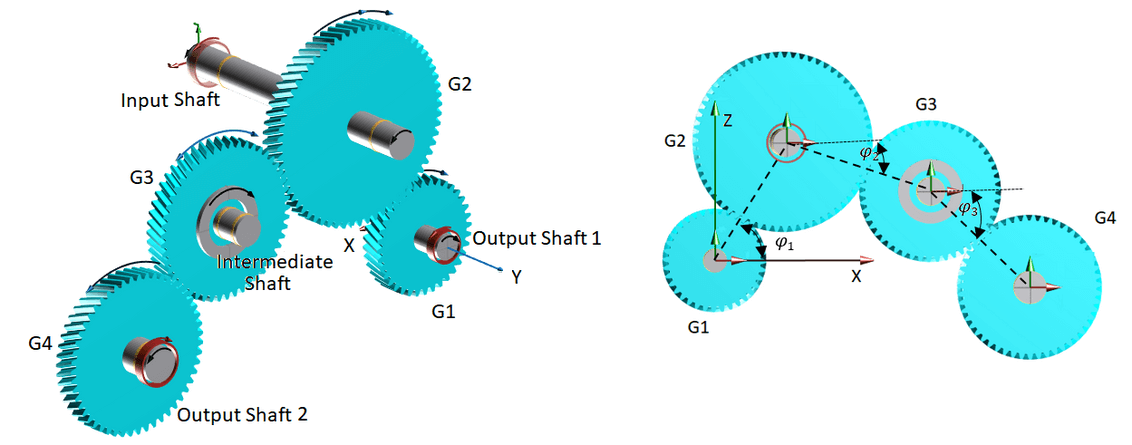The calculation of the optimum contact phase shifting is based on analytical geometry formulas, implemented in a so-called script. The script programming is a very fast and simple method in KISSsoft to solve such problems. The proposition of this approach is based on the shifting of the start of contact by half a pitch in order to avoid accumulation of high contact forces with respect to the rotation angle of gears. This simple approach, based on the gear geometry according to ISO 21771, can then be refined with the system contact analysis in KISSsoft. To evaluate if the contact phasing is ‘good’ or ‘bad’, graphics with variation of the torsional shaft deviations and the transmission errors are very useful. The torsional shaft deviation plot shows the torsional rotation of each shaft of the system. The torsional shaft deviation starts at the reference shaft with zero rotation, and then varies due to the transmission error effect from one shaft to another. The smaller the rotation is at the last shaft, the better the meshing pairs are with respect to the contact phase shifting.
3. System contact analysis
The system contact analysis is a newly developed module in KISSsoft which considers the coupling effect of all gear pairs and shaft deformations to perform the overall contact analysis. The results of the system contact analysis are shown in Figures 2 and 3 for three variants of the model. In both figures, for the original model, the peak values of the transmission error and torsional shaft deviation are ‘synchronized’. This means that their peak values occur at the same rotation angle. Therefore, it is assumed that the original model is the worst case regarding the NVH specifications. In the other variants Opt1 and Opt2, the highest values of the transmission errors and torsional shaft deviations are shifted (by 25% for Opt1 and by 50% for Opt2) with respect to the original model to decrease the resulting meshing contact forces. It is important to notice that in the Opt2 model, the transmission error of the gear pair G2-G3 is shifted in a way that a non-synchronization of the highest amplitudes of gear pairs G1-G2 and G2-G3 is evident. The models Opt1 and Opt2 are supposed to have superior performance in NVH characteristics when compared to the original model. In the next section, the forced response analysis is followed to clearly evaluate the performance improvement of these two models.










